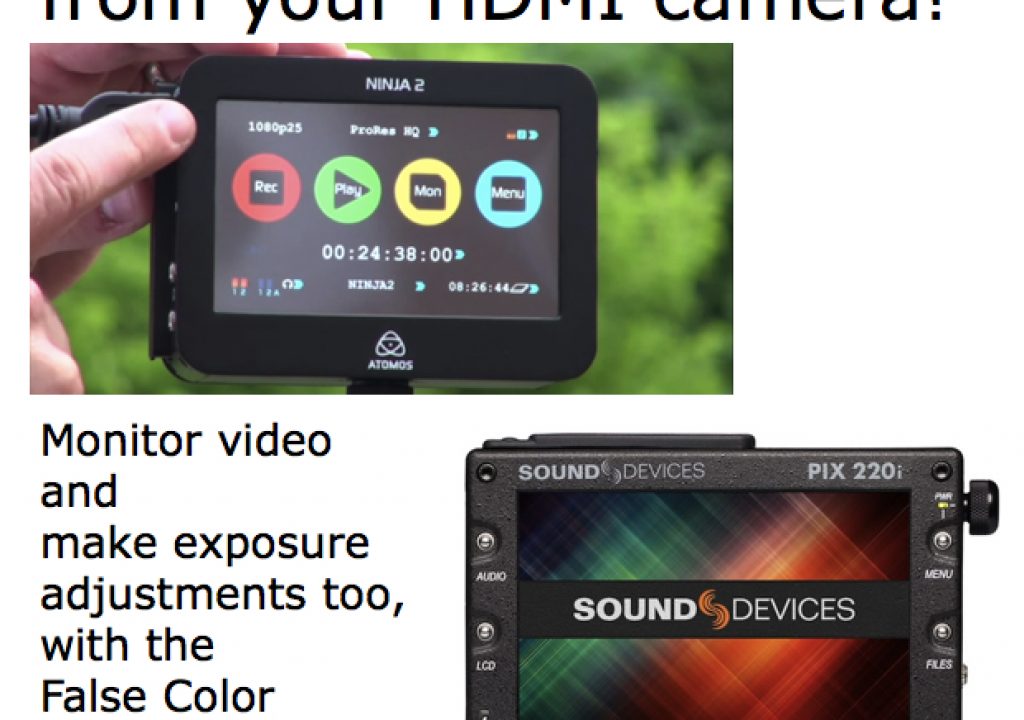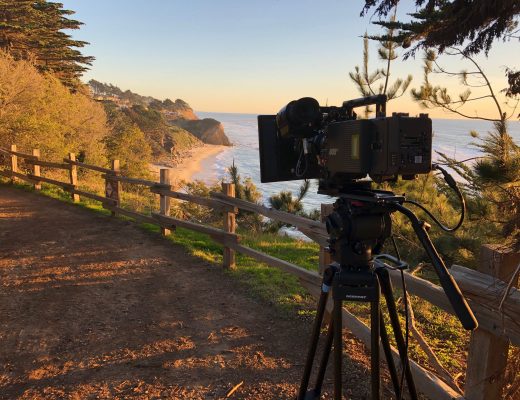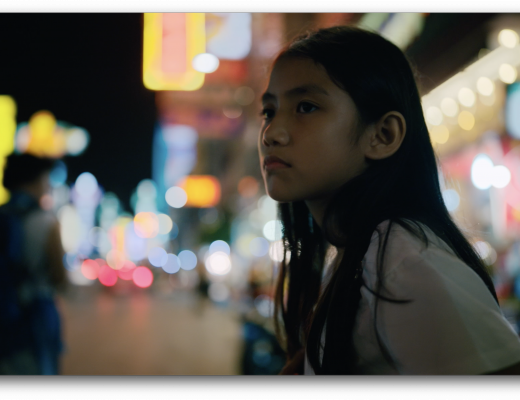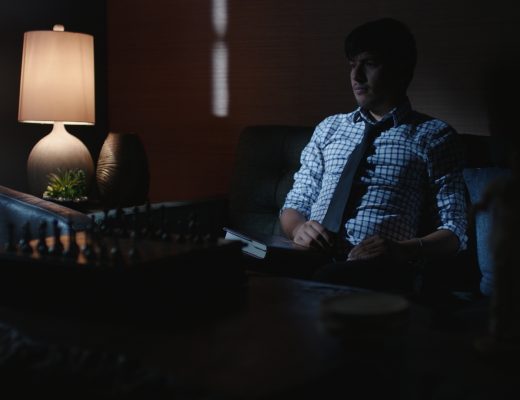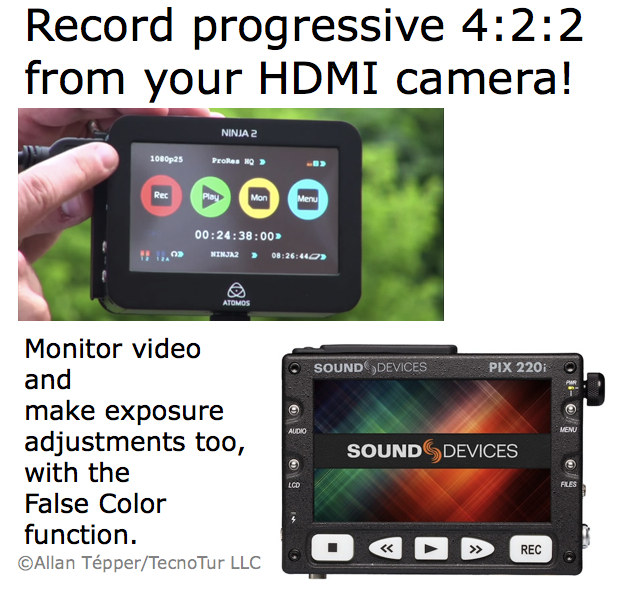
Many owners of HDMI cameras would like to record their progressive HD video externally at better quality than what’s possible internally in the camera. Frequently, they want to record their progressive HD with full raster and 4:2:2 sampling, rather than 4:2:0 which is the case with most HDMI cameras’ internal recording, and with less compression. Sometimes, they even want to record 4:4:4/RGB. Unfortunately, almost all HDMI cameras still output their progressive video in a non-native way over HDMI (with a nasty 2:2 or 2:3 pulldown), which brings workflow challenges. Some HDMI recorders now include circuits to correct this nuisance prior to recording; many still do not. Ahead you’ll learn all of the ins and outs of this issue and help you pick an appropriate recorder.
Mission statement for this article
This article is specifically aimed at users of HD cameras with HDMI output (not SDI) who prefer to shoot and edit pure progressive video for both esthetic and technical reasons, and are looking to record on an external device in 4:2:2 (or beyond), at a lower compression than possible with the camera’s internal recorder. This article is for people who agree with this pure production and post-production philosophy, whether they came to this conclusion via my prior articles, seminars, or other sources. These people understand and agree with the many benefits of shooting pure progressive and editing pure progressive, whether the final delivery will be pure progressive on Blu-ray disk, pure progressive on DVD, pure progressive on the web or Internet TV, pure progressive on a USB memory stick, pure progressive on a 720p over-the-air TV station or network (be it at a low, medium or high framerate), or low to medium framerate progressive on a 1080HD over-the-air TV station or network (even if that 1080HD station or network may demand receiving its copy of the video as PsF, as I have seen in some cases). If there are any pure interlaced lovers reading this (i.e. if you truly prefer to shoot and edit interlaced video), you can stop here, because this article isn’t for you.
Why not cover SDI in this article?
This article focuses very specifically on solving the specific challenges (and solutions) of recording true progressive from a camera’s HDMI output. Those challenges really don’t exist with SDI cameras, since the established standards for either true progressive and/or PsF-over-SDI has worked as expected with HD recorders that had have SDI (and support either of those modes of handling progressive-over-SDI).
Full raster? What’s that?
Fortunately, most of the latest HD cameras I’ve seen can now record the full 1920×1080 (1080p) and/or full 1280×720 (720p) raster, even internally. However, some of the older HD cameras forcibly subsample the horizontal resolution and only record 1440×1080 or even 1280×1080 in the case of 1080, or 960×720 in the case of 720p. I call it “subsampled horizontal resolution”. Someone (apparently in manufacturer’s marketing department) decided to call it “thin raster”, which I consider to be a euphemism. No matter what you call it, doing this is cheating you, since it throws away a substantial portion of your picture quality. If you have a camera that internally records only a subsampled horizontal resolution, like (just a few examples) HDV 1080, DV100 (“DVCPRO-HD”) at either HD format, or even some of the earliest AVCHD cameras, this will be one additional advantage for using an external HD recorder. Well, at least that will the case if the camera portion (sensor and related circuits) actually has enough resolution to match the target format. Some of the older “HD” cameras actually have 960×540 sensors, so in that case, you’ll only get the other benefits of the improved recording.
4:2:2 hight-quality recording códec
All of the HDMI recorders that I am covering in this article use one or the other of two high-end recording códecs (Apple’s ProRes422 or Avid’s DNxHD). Some even give you the option of either. It is commonly accepted that both are extremely high-quality and resist multiple generations without visible loss, and this is not the focus of this article, since at least one of these códecs is common to all of the HDMI recorders shown, and modern editing apps can read at least one of them, if not both.
Why most HD cameras still output progressive video with nasty 2:2 or 2:3 pulldown over HDMI, despite native internal (or at least Benign PsF) recording?
Although to my knowledge, the only camera manufacturer that has actually stated it publicly is Sony, the reason is probably the same for all of them: The HDMI camera manufacturers are extremely concerned about monitor compatibility, since not all HDMI monitors and HDTV sets can accept true progressive 1080p signals at their native framerate. Although Canon’s XA10 cameras can output 1080p-over-HDMI, it is not at the native framerate: It’s progressive 1080p23.976 or 1080p29.97 over 1080p59.94, or it’s 25p over 1080p50. I don’t know why HDMI camera manufacturers don’t handle this issue the way many Blu-ray players do: Many Blu-ray players offer a menu option to output native low framerate progressive 1080p over HDMI (and/or they negotiate via EDID). But (to my knowledge) only a couple of HDSLRs from Nikon actually output native low and medium framerate 1080p over HDMI. So we need to deal with the mess after the progressive signal has been “camouflaged” as interlaced 1080i over HDMI.
Although Sony went to great lengths to add progressive flags to their HDMI signal on several of the NXCAM HDMI outputs, to my knowledge, none of the current HDMI recorders that have a pulldown removal feature is yet taking advantage those flags. So far, the recorders that I know are ironically solving the problem a different way. In the case of the simpler 2:2 pulldown (25p over 50i, or 29.97p over 59.94i), they simply treat the 1080i signal as PsF when instructed to do so, and then encode and record as true progressive 25p or true progressive 29.97p. In the case of the more complex 23.976p over 59.94i (2:3), they are currently analyzing the video’s cadence to perform a reverse telecine.
The best solution to the camera manufacturer’s blunder
You certainly could deal with this issue as Malignant PsF via software using the methods I have described in the PsF missing workflow series. In fact, that’s what you should do if you already own an HDMI recorder which (currently) lacks this capability. But the best solution is to nip the problem in the bud, in the HDMI recorder, before the encoding and recording even take place. So look for a model that says YES in the first column of the comparison chart. You’ll also be able to compare other features that I have emphasized.
Current small HDMI recorders
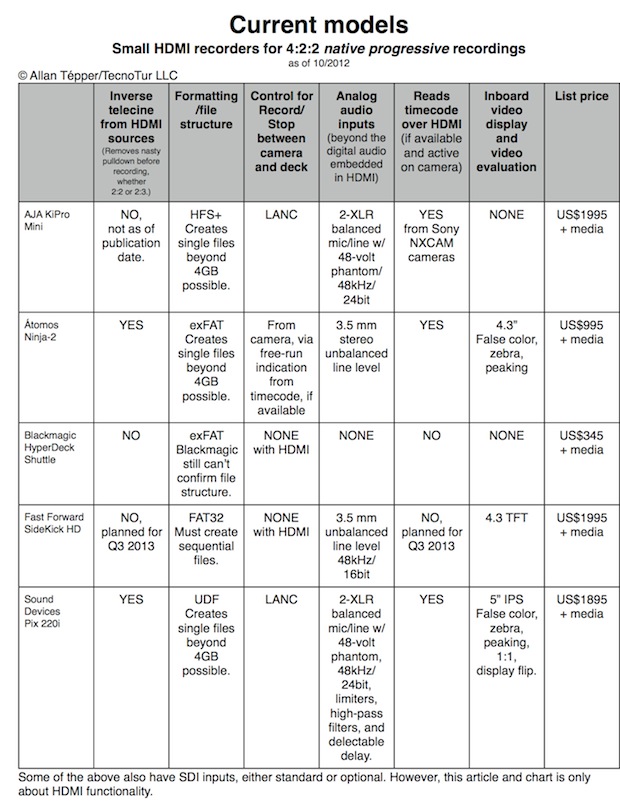
Why so many first-generation HDMI recorders neglected this issue?
Although not listed in the the chart you just read, I will now point out that even the original Ninja from Átomos lacked the pulldown removal from HDMI feature. I am so glad that Átomos added this feature with the Ninja–2, and I am also glad that SoundDevices included it even in the first Pix220 (which I reviewed here), and continues to do so with the current Pix220i. So why do I suspect that so many first-generation HDMI recorders neglected this issue? I suspect the manufacturers that designed the first generation HDMI recorders incorrectly assumed that progressive HDMI cameras would offer native progressive over HDMI. The problem is that very few cameras do that today: Most don’t as of the publication date of this article. Last year, Átomos even announced its own software solution (see PsF’s missing workflow, Part 5: Átomos hires a stripper!).
Focus on the semi-finalist HDMI recorders that remove pulldown before recording
After eliminating the recorder models that currently don’t offer pulldown removal, here are the semifinalists:
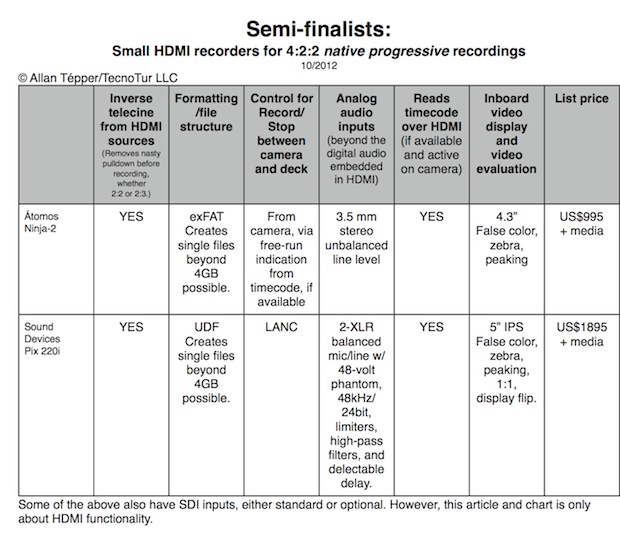
Both the Ninja–2 and Pix220i both have the False Color function to help you make an ideal exposure, and peaking to help with focus. Although not mentioned in the chart, the Pix220i also has the capability to rescale from one resolution to another before recording. As you can see, the Pix220i has LANC to allow the recorder to act as a slave to the STOP/RECORD from a camera, if the camera has LANC. (Although the Ninja–2 doesn’t have LANC, this can also be accomplished with the Ninja–2 if the camera offers timecode over HDMI and it’s activated and set for Record Run.) The Pix220i has a larger display with 1:1, and a much more sophisticated audio front end.
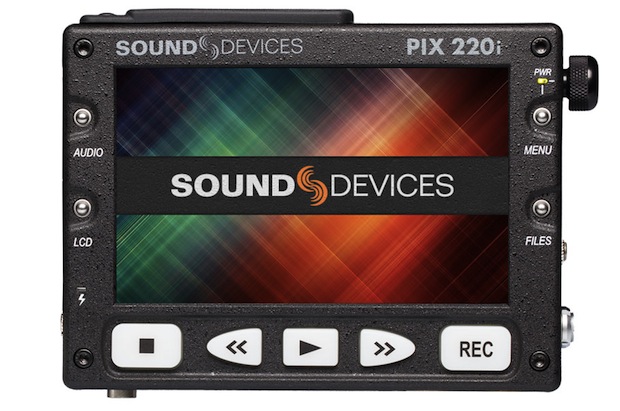
The new Pix220i recorder from SoundDevices features a new IPS screen.
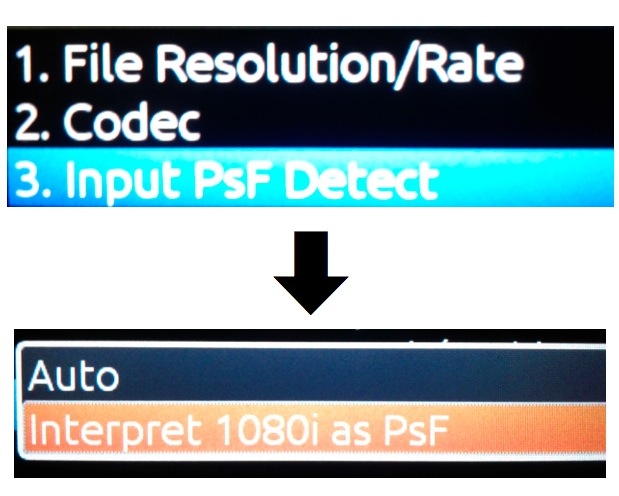
Menu command of the PIX 220 or PIX 240 where you ask the recorder to interpret 1080i as PsF, and therefore make a true progressive recording. Adiós to the PsF nonsense caused by the camera’s hostile HDMI output! Handheld screen shots courtesy of Diego Pocoví.
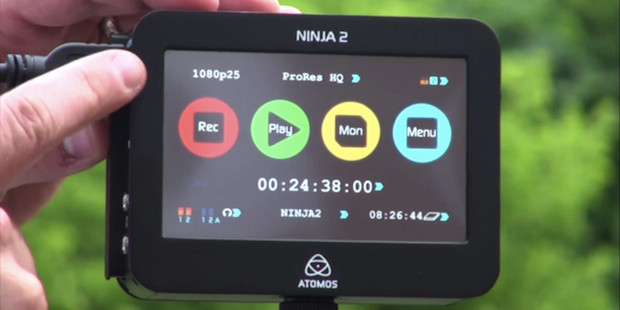
The Ninja–2 recording progressive 1080p25. Unlike the original Ninja, fortunately the Ninja–2 can remove the nasty pulldown from all three types of low and medium progressive HDMI signals signals before encoding and making a pure progressive recording, and only costs US$995 plus media.
With the Ninja–2’s unbalanced line level input, you depend either upon the camera’s own good audio front end (if present in the camera) or an good external audio mixer with high-quality mic preamps, with a line-level output. With the Pix220i, you get the get the equivalent of a 2-input top-end audio mixer built in. These are important distinguishing features to keep in mind when choosing, according to whether you already own such an audio mixer or whether your camera has a good audio front end or not… and whether you like the idea of combining these things into the recorder of prefer them to be separate components.
What about RGB/4:4:4 recording from the HDMI output of your camera?
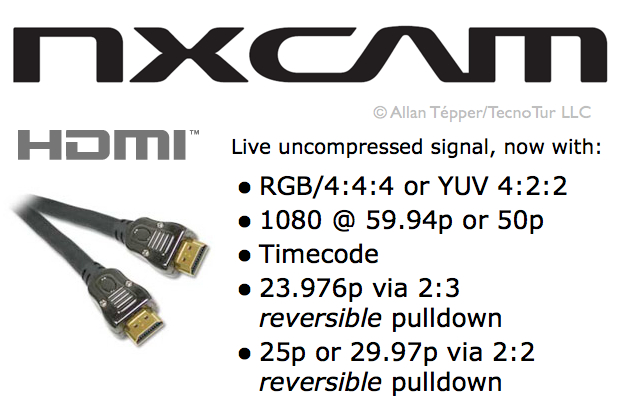
Back in June 2011, I published Untapped features in Sony NXCAM’s new HDMI output. One of the many features was RGB/4:4:4 output, if so requested via EDID. Well, none of the HDMI recorders covered so far in this article can record RGB/4:4:4, and to my knowledge, as of the publication date of this article, no such HDMI recorder exists yet. The two least costly RGB/4:4:4 recorders I know to exist on the market are the KiPro Quad from AJA, and the Gemini 4:4:4 from Convergent Design. Both have an HDMI connector, but unfortunately (for the mission of this portion of this article) both are HDMI outputs, not inputs. The inputs of these recorders are SDI. That means that to make this work (record RGB/4:4:4 from the HDMI out of a compliant NXCAM), some manufacturer would have to offer a converter box that goes from HDMI to SDI and include the necessary option to request RGB/4:4:4 via EDID over HDMI. Even though they did in the past, Convergent Design apparently no longer sells converter boxes of any type. AJA indeed does manufacturer converter boxes including those that go from HDMI to SDI. However, after inquiries to the company, at least as of publication date of this article, none of the AJA converter boxes are equipped to request RGB/4:4:4 via EDID over HDMI. So we’ll have to wait for some manufacture of such boxes to update their firmware to activate this possibility. It will likely help them sell them more recorders if they do. Among these two companies (AJA and Convergent Design), both have the incentive of selling more RGB/4:4:4 recorders. AJA has a current line of converter boxes but (to my knowledge) no experience doing EDID requests over HDMI.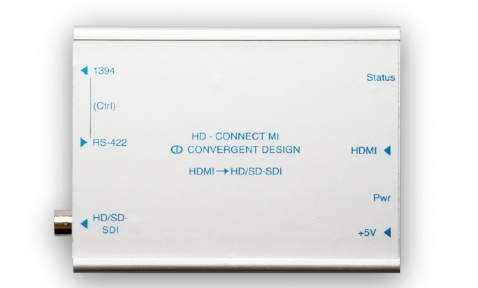
On the other hand, Convergent Design in the past had (possibly unique) experience making their (apparently now extinct) HD-Connect MI box (shown above) request 720p from a 1080 camera via EDID over HDMI, as I covered in the 2009 article Why capture HDV via HDMI?, in the section called “720p tricks via HDMI capture” on page 2 of that 2009 article.
Will AJA modify the firmware of one of its existing converter boxes to permit this, and potentially sell more KiPro Quad recorders as a result? Will Convergent Design resurrect its HD-Connect MI box and add this capability, given their prior experience programming EDID requests over HDMI, and with the incentive of selling more Gemini 4:4:4 recorders? You’ll know shortly after I do 🙂
Why would we want to record RGB/4:4:4 from an NXCAM?
Most color grading apps I have seen need to work with RGB/4:4:4 video files. If you plan to grade your NXCAM material with such a grading app and can get an original native RGB/4:4:4 recording rather than transcoding later, you’ll save both time and quality.
To make sure you continue to see my upcoming articles, sign up to my mailing list here.
My latest ebook
I have just published an ebook in two languages.
The format is Kindle, but even if you don’t have a Kindle device, you can read Kindle books on many other devices using a free Kindle app. That includes iPad, iPhone, Android phones, Android tablets, Mac computers, Windows computers, some Blackberry phones and Windows 7 phones.
In English:
In English, it is currently available in the following Amazon stores, depending upon your region:
- At Amazon.com (for all of the Americas and the Republic of India)
- Amazon.co.uk (United Kingdom)
- Amazon.de (Germany)
- Amazon.es (Spain, pero a lo mejor lo prefieres en castellano, a continuación)
- Amazon.fr (France)
- Amazon.it (Italy)
If you’re going to buy a Kindle book as a gift, you must do so via the Pan-American Amazon store (the first one listed above), regardless of where you live or where the recipient lives.
En castellano: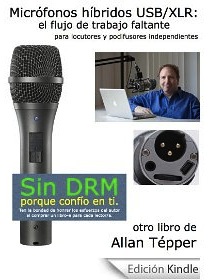
En castellano, está disponible actualmente en las siguientes tiendas Amazon, según tu región:
- Amazon.com (todas las Am©ricas y la República de la India)
- Amazon.co.uk (Reino Unido)
- Amazon.de (Alemania)
- Amazon.es (España)
- Amazon.fr (Francia)
- Amazon.it (Italia)
Si vas a comprar un libro Kindle como regalo, debes hacerlo vía la tienda panamericana de Amazon (la primera de la lista) sin importar donde vivas tú o donde viva la persona que recibirá el regalo.
Allan T©pper’s books, consulting, articles, seminars & audio programs
Contact Allan T©pper for consulting, or find a full listing of his books, articles and upcoming seminars and webinars at AllanTepper.com. Listen to his TecnoTur program, which is now available both in Castilian (aka “Spanish”) and in English, free of charge. Search for TecnoTur in iTunes or visit TecnoTur.us for more information.Disclosure, to comply with the FTC’s rules
No manufacturer is specifically paying Allan T©pper or TecnoTur LLC to write this article or the mentioned books. Some of the other manufacturers listed above have contracted T©pper and/or TecnoTur LLC to carry out consulting and/or translations/localizations/transcreations. Many of the manufacturers listed above have sent Allan T©pper review units. So far, none of the manufacturers listed above is/are sponsors of the TecnoTur programs, although they are welcome to do so, and some are, may be (or may have been) sponsors of ProVideo Coalition magazine. Some links to third parties listed in this article and/or on this web page may indirectly benefit TecnoTur LLC via affiliate programs.
Copyright and use of this article
The articles contained in the TecnoTur channel in ProVideo Coalition magazine are copyright Allan T©pper/TecnoTur LLC, except where otherwise attributed. Unauthorized use is prohibited without prior approval, except for short quotes which link back to this page, which are encouraged!

Filmtools
Filmmakers go-to destination for pre-production, production & post production equipment!
Shop Now